
The Oltrepò Pavese region in Italy (“oltre po” means “on the other side of the Po River”) has been cultivating wine grapes for centuries. It’s located at the base of the Apennines and Ligurian Alps within Pavia (Pavese) province in the north-central winemaking territory of Lombardy, where the traditional method-style Italian sparkling wine Franciacorta is produced. The geographic position of Oltrepò Pavese near both the Po River and the Ligurian Sea contributes to a temperate Mediterranean climate characterized by warm summers, limited precipitation, and cool winters. The neighboring Apennines buffers the region from potentially damaging winds. These factors, along with the iron-rich calcareous, limestone, clay, and sand-dominant soils of its hilly and mountainous landscape all come together to create optimal conditions for winegrowing in Oltrepò Pavese.
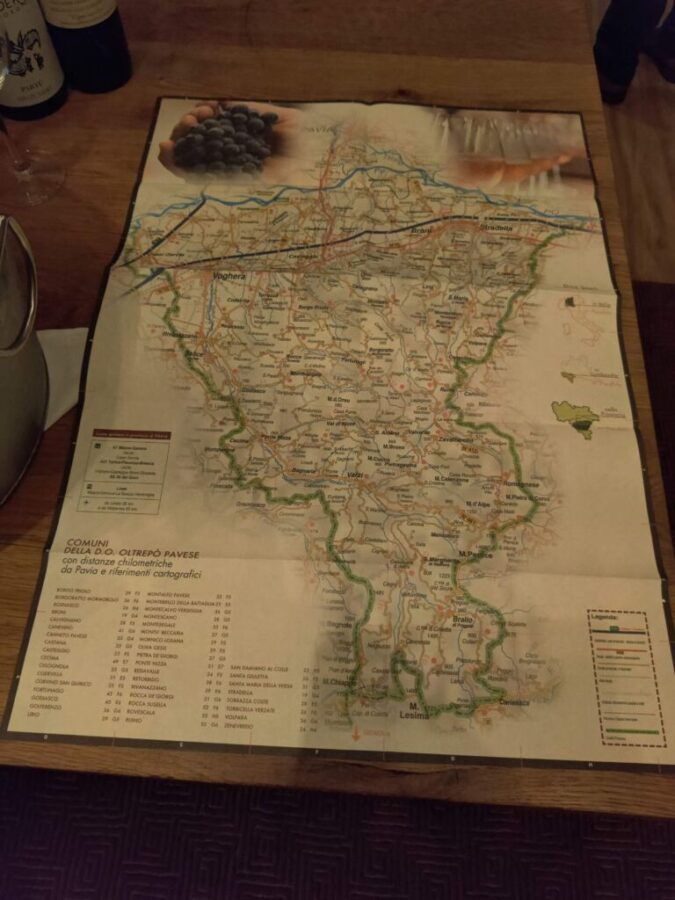
Nevertheless, Oltrepò Pavese wine grape growers didn’t really get into the business of producing their own wine until relatively recently, partly because they were busy sourcing their grapes to winemaking neighbors in Piedmont (where the fine red wines Barolo and Barbaresco are made) to the west, and Emilia-Romagna, (site of bubbly rose’ and red Lambrusco production) to the east. Fashion capital Milan is about 50 miles north. Although Oltrepò Pavese still sources grapes to its neighbors, the region has also been producing more and more of its own wine in a plethora of styles. Oltrepo Pavese accounts for approximately 70% of wine production within Lombardy.

The Consorzio Tutela Vini di Oltrepò Pavese was established in the summer of 1960 by a group of local producers with the aim of protecting and promoting Oltrepò Pavese wines. It’s guided by the principle “Here, wine is wine,” an approach that outlines the Consorzio’s commitment to producing quality, terroir-driven wines. The Consorzio works in cooperation with the Ministry of Agriculture to protect and maintain integrity of quality and origin in all its products. Wine educator, and Oltrepo Pavese Ambassador Susannah Gold conducted a seminar and masterclass featuring sparkling, white, rose’, red, and sweet wines from a number of Oltrepò Pavese-area producers at Corkbuzz off Union Square in New York City.
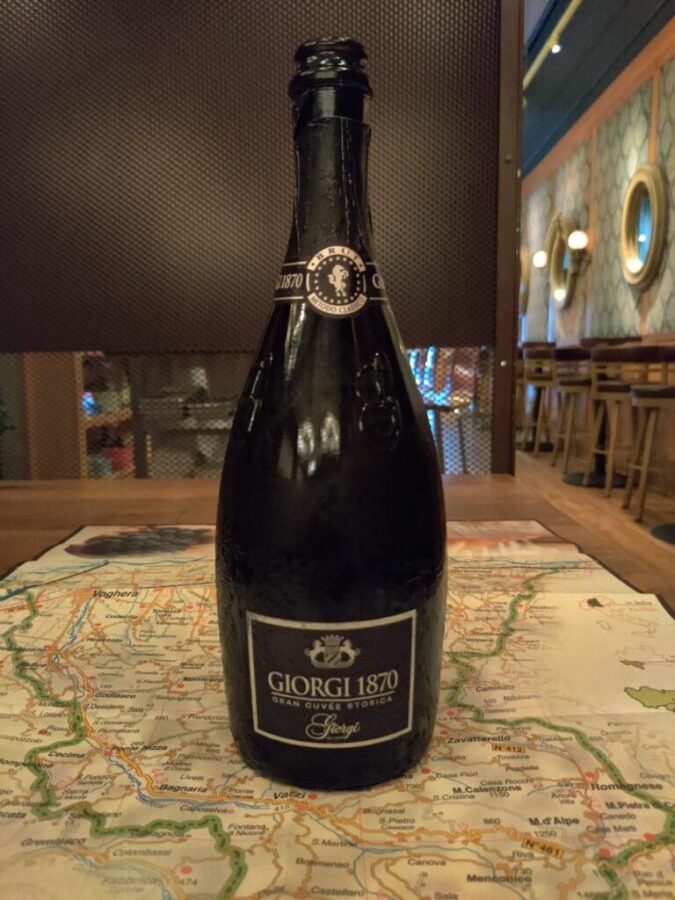
Giorgi, Oltrepo Pavese DOCG, Metodo Classico, Pinot Nero 1870, 2018 (Sparkling (spumante) production began in Oltrepo Pavese in 1870.)
100% Pinot Nero from clay and limestone soils situated at 250-400 asl. Secondary fermentation in bottle for 36 months, followed by cellar aging for 6 months.
Crisp, with a good salinity and acidity, aromas of fresh citrus and orchard fruit, as well as vanilla, and notes of lemon, green apple, and apricot, as well as baked bread. Clean finish. This spumante is a brut (7g/l of residual sugar), but it tastes more like an extra brut (under 6g/l of residual sugar). There is a growing trend among Italian wine drinkers towards a leaner style of spumante; nevertheless, the brut varieties are still the most prevalent and popular.
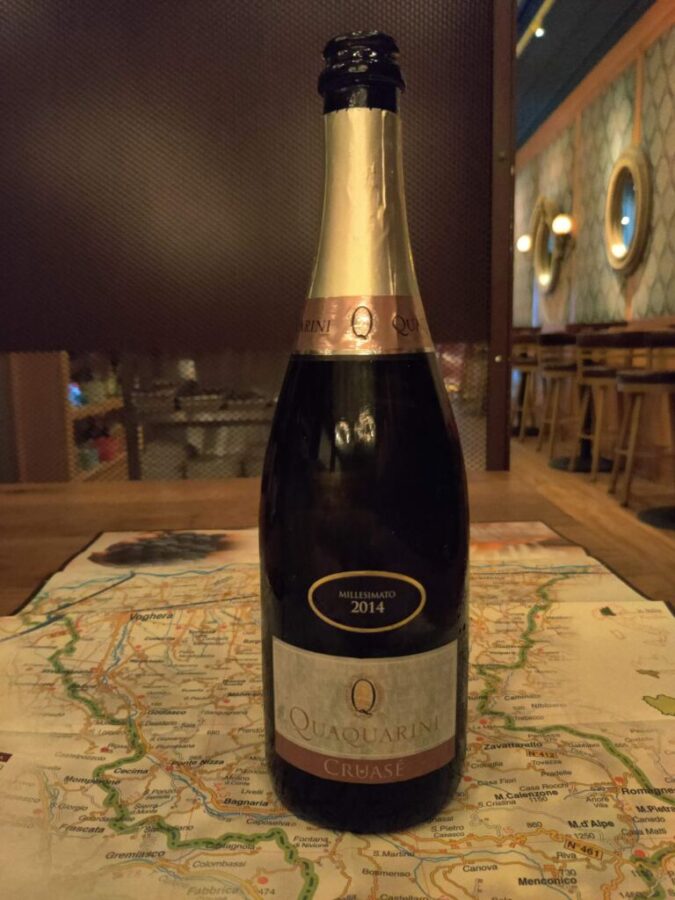
Francesco Quaquarini, Oltrepo Pavese DOCG Metodo Classico Pinot Nero Rose’, Cruase, 2014 (organic)
(Cruase denotes rose’ made from Pinot Noir grown within the Oltrepo Pavese region.)
100% Pinot Nero
24 months on the lees. 7 years on the lees before disgorgement.
Fine and persistent mousse, with good acidity, aromas of red berries and balsamic, and notes of ripe and juicy raspberries and fresh herbs.
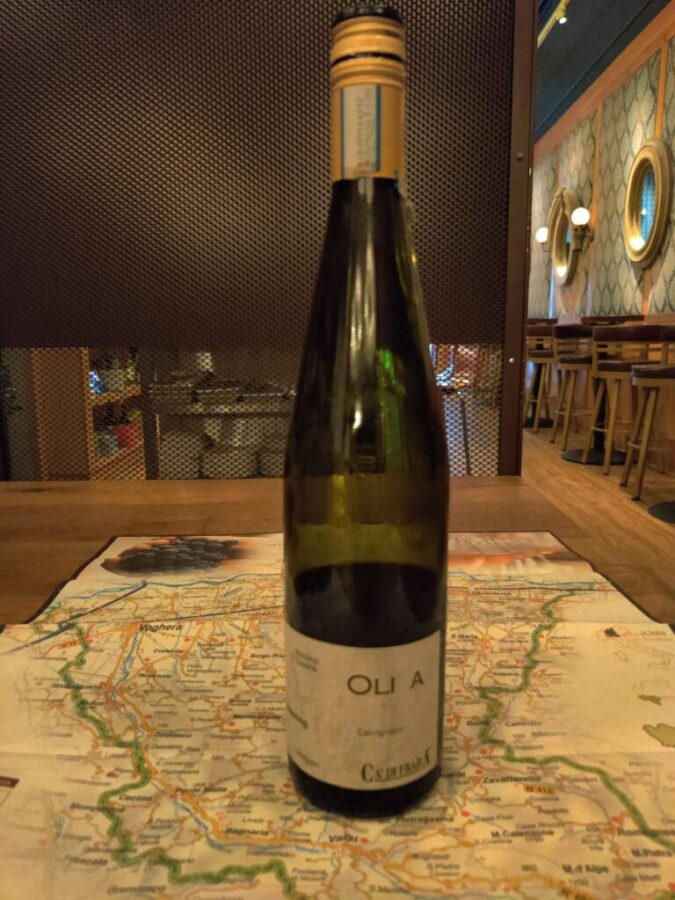
Ca di Frara, Oltrepo Pavese DOC Riesling Oliva, 2021 (named after the town where it is produced)
100% Riesling Renano (Rhine)
Two years aging in bottle.
Fresh and elegant, with a balanced acidity, aromas of white flowers, and citrus and orchard fruit, and notes of honeysuckle, grapefruit, and apples, as well as pears and honey.

Torti Eleganza del Vino, Oltrepo Pavese DOC, Barbera, Route 66, 2019 (This producer likes to create different labels for various markets. The “Route 66” label is marketed solely in the United States. This producer is also the only winery that is officially licensed by Sanrio, creator of the Hello Kitty toy franchise, to feature its characters on its labels.)
100% Barbera
Fresh, with a bright acidity, aromas of balsamic and mixed red and dark berries, and notes of juicy raspberry, blackberry, and cherry, as well as herbs.
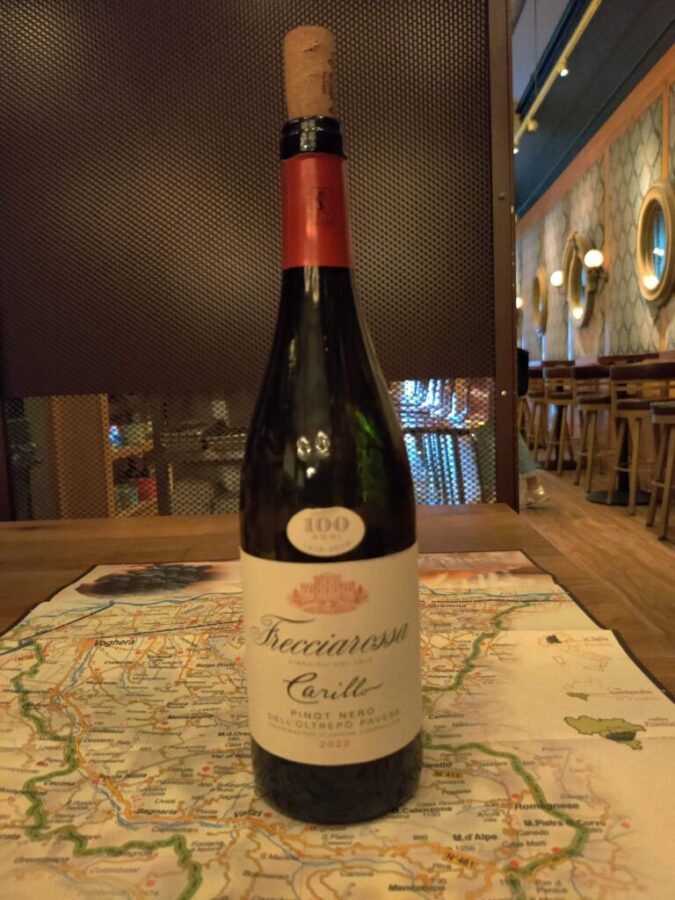
Frecciarossa, Pinot Nero del’ Oltrepo Pavese DOC, Carillo, 2022 (This winery was founded in 1917. The first generation of owners sold their wine to Italian immigrants as they boarded ships bound for the United States.)
100% Pinot Nero cultivated on lime and clay soil-dominant vineyards located 150-200 meters asl
Fermented in stainless steel vats, followed by natural malolactic fermentation in oak barrels. Aged six months in stainless steel vats, and a minimum two months in bottle.
Fresh, with a puckering acidity, aromas of balsamic and tobacco, and notes of juicy raspberry and blackberry. Softens with age.

Cordero, Pinot Nero del’ Oltrepo Pavese DOC, Partu, 2020
100% Pinot Nero
Produced from vines (with an average age of 30 years) that are planted on limestone and clay soil.
Fermented in stainless steel vats, followed by 12 months of malolactic fermentation in barriques. The wine is aged for an additional year in bottle. No carbonic maceration.
Full-bodied, with a fresh acidity and minerality, balanced tannins, aromas of purple flowers, red berries and stone fruits, and mixed spices, and notes of violets, raspberries, plums, and red currants, and black pepper.
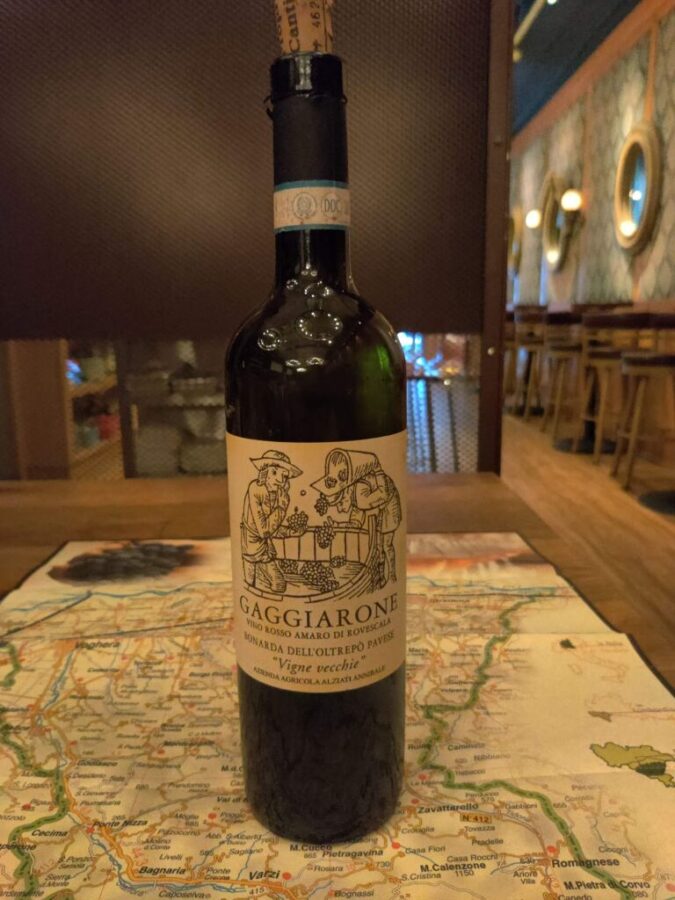
Alziati, Bonarda dell Oltrepo Pavese DOC,Gaggiarone, 2017
95% Croatina, 5% Uva Rara
Aged in cement tanks and in bottles. No additives were used in the vinification process. No filtration. Natural and rustic style.
Light-bodied, with a soft acidity, aromas of red and dark fruit, mocha, and scented wood, as well as sweet spices, and notes of mixed berries, and toast.
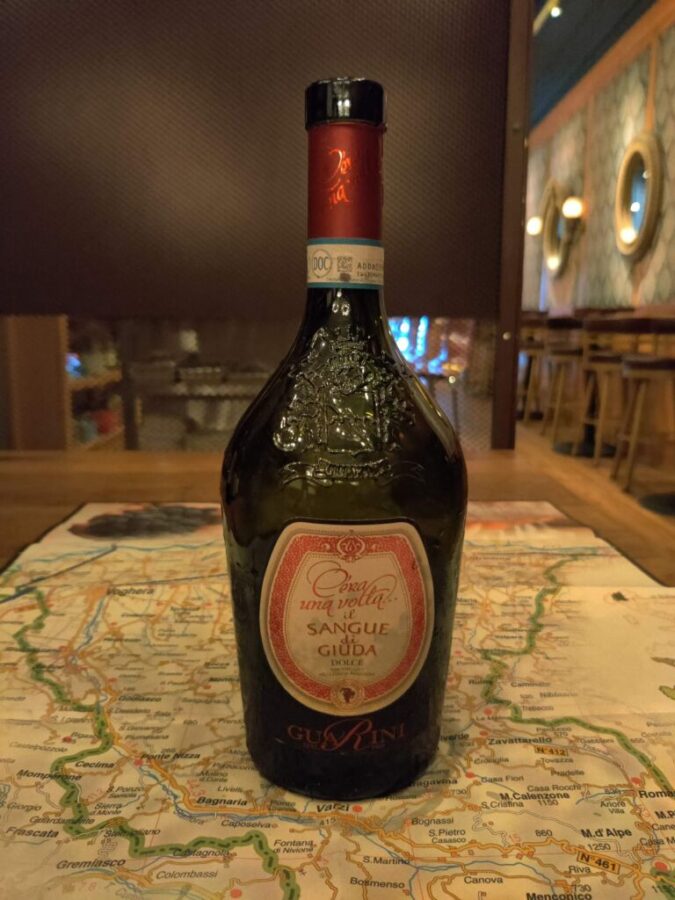
Losito & Guarini, Sangue di Giuda del’ Oltrepo Pavese DOC, C’era Una Volta, 2021 (The name of the wine comes from the story of Judas following his betrayal of Jesus. After Judas died, he repented for betraying Jesus. He was forgiven and resurrected in the town of Broni, in Oltrepo Pavese. The citizens of the town wanted to kill him after they found out who he was, but he cured their diseased grapevines and saved the crop. The townspeople named the wine they made from these grapevines Sangue di Giuda (Blood of Judas) to show their appreciation.)
Blend of Croatina, Barbera, Uva Rara, and Vespolina.
Aged in stainless steel tanks. Natural fermentation takes place in pressurized tanks at 14°C, where the wine undergoes micro-oxygenation with cultured yeasts. The wine is kept at cold temperatures after it is removed from the vat to preserve its sweetness.
Frothy and jammy, with aromas of dark flower petals, and candied blueberries, and notes of roses, as well as preserved and candied mixed red and dark berries, and black stone fruit.

Be First to Comment